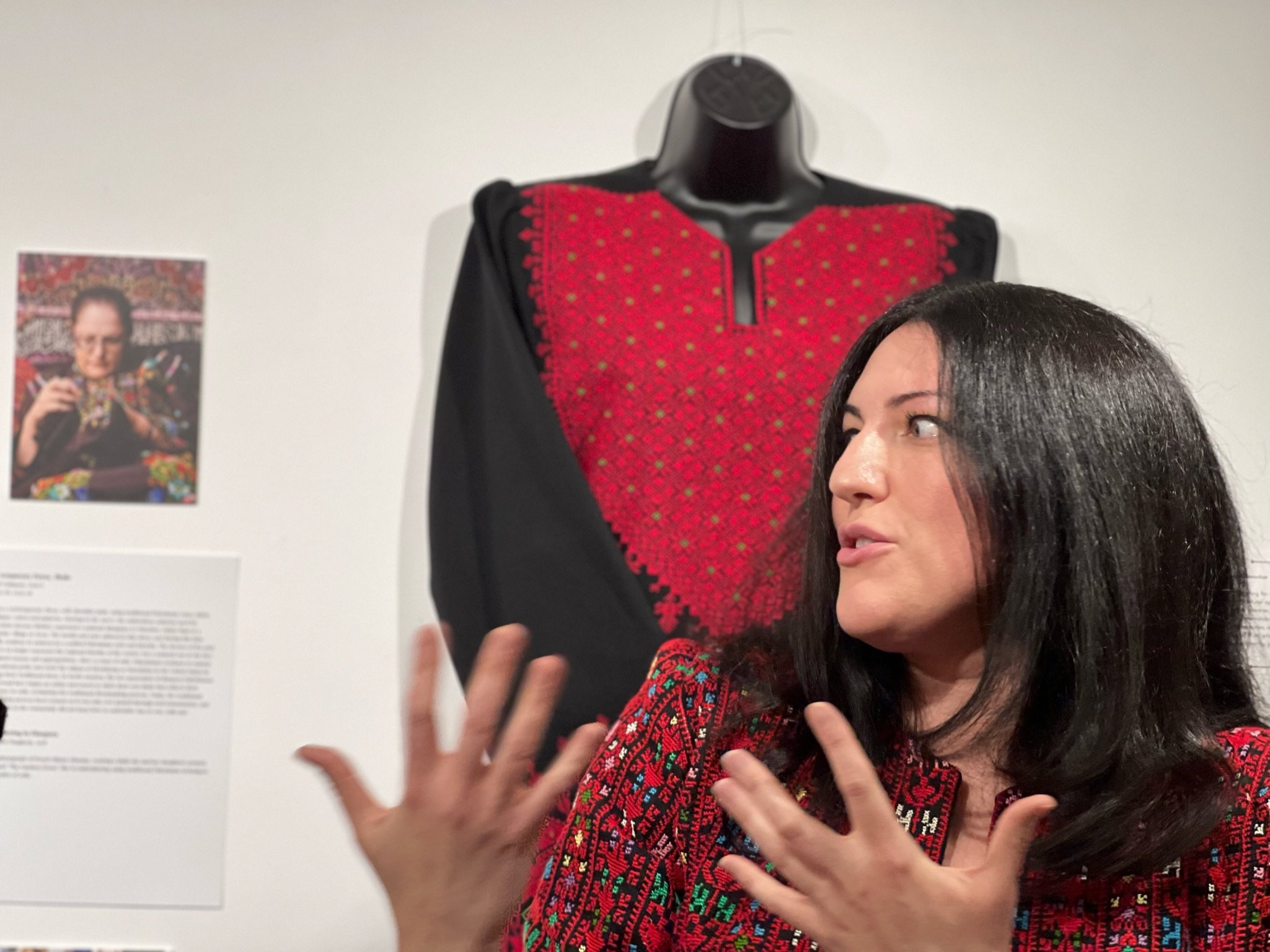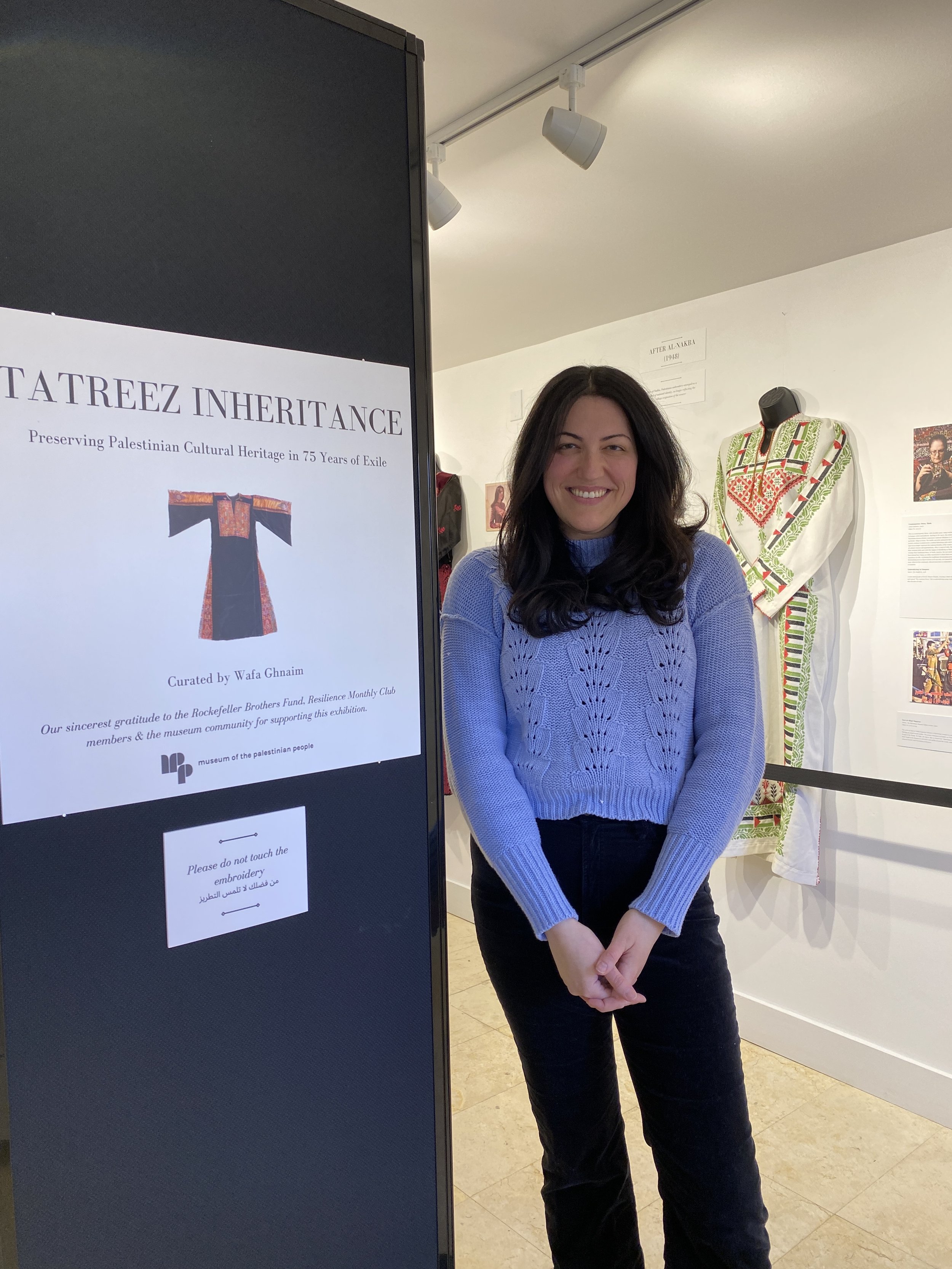“Tatreez Inheritance,” the curatorial debut of Wafa Ghnaim, explores the enduring presence of Palestinian embroidery in the United States through a diasporic lens. The exhibition affirms the role of material culture and art history in preserving a nation’s identity across generations and borders.
Over the past 75 years, the displacement, dispossession, and dispersion of the Palestinian people have carried precious embroidered dresses and textiles across Europe and North America. These garments—once rooted in the land—now circulate as living archives of memory, resistance, and belonging.
At the heart of “Tatreez Inheritance” is a collection of historic and contemporary thobes, accessories, and heirlooms that celebrate a profound inheritance: the cultural legacy assured to every Palestinian, no matter where they are in the world.
“Tatreez Inheritance” was on view at the Museum of the Palestinian People from March 31 to September 23, 2023.
Exhibition Statement for Tatreez Inheritance
Written by Curator, Wafa Ghnaim
Tatreez Inheritance examines the presence of Palestinian embroidery in the United States through a diasporic lens, asserting & affirming the power of material culture & art history in preserving a nation’s identity. The traditional Palestinian woman's dress, thobe (ثَوْب), & the preservation of embroidery traditions, tatreez (تطريز), have taken on an immense symbolism for Palestinians living in exile. This exhibition highlights a tremendous inheritance — one of cultural heritage — assured to every Palestinian across the globe.
Prior to 1948, the traditional dresses of historic Palestine reflected the regional identity of the wearer. Representing one's village, city or nomadic identity in the thobe was more important than indicating religious identity. After the expulsion of Palestinians from their homeland in 1948, the thobe lost its regional distinctions and emerged as a powerful symbol of national identity. Though Palestinian embroidery has traceable origins as early as the textiles found in King Tut's tomb, the successful preservation of the art form is in large part due to its ongoing adaptation to the lived experience of Palestinians.
Tatreez is a living art form inherited by all Palestinians, that preserves our stories, past and present.
Throughout the centuries, Europeans have referred to Palestine as the "Holy Land" — a term used to describe the culture of the indigenous inhabitants of Palestine that implies primitivity and homogeneity. Despite the diverse communities inherent to Palestinian society, English & European pilgrims preferred to believe that those living in the "Holy Land" hadn't evolved since the Biblical times, and required colonization to modernize. As transportation became more widespread, tourism & the overall movement of goods rapidly changed the world. In 1892, Palestine began to see a dramatic economic & societal shift with the opening of the railway from Yaffa to Jerusalem, a road often travelled by pilgrims. As a result, during the late nineteenth & early twentieth centuries, tourism to the "Holy Land" had drastically increased. Pilgrims and tourists purchased Palestinian embroidery claiming them as Christian heritage items. In the early twentieth century across Europe and North America, wealthy women found it fashionable to acquire large historic dress collections from various cultures, and wear them in their daily life as a status symbol. These historic shifts in life & society in Palestine, and globally, as well as other contributing factors such as British colonialism, caused the thobe to circulate Europe and North America.
Over the past 75 years, the dispossession, displacement & dispersion of the Palestinian people to every country on earth ensured that Palestinian embroidery traditions were not lost. This preservation work guaranteed resources for museums and collectors to properly identify Palestinian dresses as Palestinian and dress collections were viewed less and less as remnants of the Biblical past. In some cases, the thobe has been returned to the Palestinian community, such as those presented in Tatreez Inheritance.
Press Highlights
Observer, Wafa Ghnaim’s ‘Tatreez Inheritance’ Showcases the Richness of Palestinian Embroidery. 15 May, 2023. [Web]
GQ Middle East, Tatreez Inheritance: An Homage to Palestinian Embroidery and Textiles at US-based Museum of the Palestinian People. 7 April, 2023. [Web] [PDF]
Middle East Eye, Washington's Palestine museum sees increased attendance ahead of Nakba. 12, May 2023. [Web]
Washington Report on Middle East Affairs, Inside the Museum of the Palestinian People’s Latest Exhibit. 10, June 2023. [Web]




